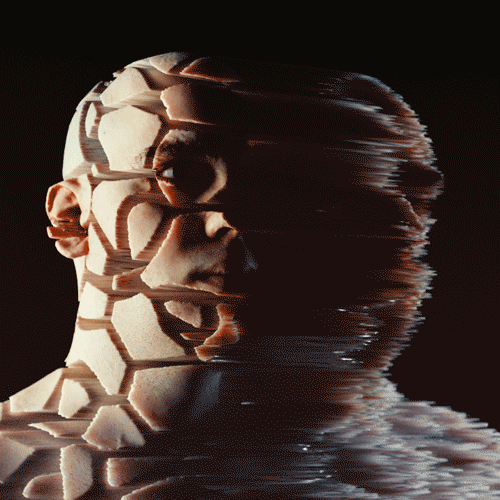Text & Interview: Alec Coiro
All Images Courtesy of the Artist
Adam Pizurny is one of the ideal artists for the modern age. First, he employs the most modern tools to explore timeless themes of humanity; the perfect combination of the new and the classical. Second, he suits the modern connoisseur’s penchant for preferring the virtual over the real insofar as one doesn’t need to go to the art gallery to experience his work. As Pizurny puts it in our interview below, his attitude is that “the whole web is your gallery.” Although, this is not exclusively true, as his work has been projected onto larger physical canvases than any other artist I’ve met.
Best known for his clever and often shocking manipulations of hyper-real human busts, he tells us about his latest expansions into audio-reactive animation, and why it’s still too soon to get into VR (even though he already bought the gear).
In addition to granting us an interview from his home in Prague, Pizurny also provided us with some wonderful examples of his work. So take a dive into the world of Pizurny, which is not only surreal and thoughtful but also quite a joy.


You’ve gotten a lot of press for your work with virtual human heads. Looking at your recent work, you seem to be exploring different directions.
Since day one, I’ve had three areas of interest: humans, geometric art, and abstract forms, which I explore periodically or combine them. It was just a coincidence that my art went viral in my “human” phase.
Also, I’ve recently started using new software called Houdini, which I’m researching currently.
What’s your latest interest?
Last week I was developing audio-reactive animation, which is quite easy in Houdini if you know where to click (Hi Vit) LOL.
What do your most recent and upcoming works focus on?
Maybe to try more audio-reactive stuff, and also vice versa, which I haven’t figured out properly: letting video/animation control sound. I’m also interested in exploring L-systems, but honestly, I rather don’t plan on it. I’d rather let the ideas come by themselves than chasing them.


Sometimes I have a great idea for an animation in the shower or walking down the street. Other days I just doodle in the computer, letting the happy accidents happen.


When you make a piece, to what extent do you have a final result in mind before you start working, and to what extent does the final result come out of experimenting and the process in general?
The fascinating thing about 3d art is that if you have some skill, you can make anything you can imagine, but yet, a lot of time as I work it branches in a lot of different ways. And sometimes I have a great idea for an animation in the shower or walking down the street. Other days I just doodle in the computer, letting the happy accidents happen.
Going back to your work with virtual busts, what process do you use to create them? Do you can real heads into 3D space? And if so, how do you choose your models?
Some of them are purchased from the amazing TEN24 store, and few of them are my scans. I scanned myself and friends who were on hand at the time.
You recently had some large-scale exposure (literally) in Brazil’s FILE Festival? What does the FILE Festival focus on, and how does your work fit into it?
Oh yes, those looked amazing on the LED wall. For some reason, I have a big fanbase in South America, maybe because of their passion for the bizarre and surreal? Anyway. FILE (Festival Internacional de Linguagem Electronica) is the biggest South American new media art festival, and I’m honored to part of it.


Your medium provides an opportunity for photorealism. What are your thoughts on photorealism in terms of its opportunity for the artist and its effects on the viewer?
I’m still far from it. But it has been artists’ goal for ages. Just look at the old masters. We just have different tools nowadays. I’m not saying that artists have to copy reality, but if he succeeds, he can easily create his own realities.
Working in 3D and being an early adopter of GIFs as an artistic medium, you’re clearly an artist who exploits the canvases offered by modern technology.
And that’s awesome! Compared to just 10-20 years ago, you have unlimited free canvases and paint. Also, the whole web is your gallery. You can exhibit whatever you want whenever you want. No curators; just you and the viewer. You can also compare it to digital graffiti.
Given your interests, are you excited by virtual reality? Do you have any plans to work in the medium?
I have already bought the Oculus Rift, but the technology is still young, and audience small, I will wait until the hardware floods the mainstream market and the first VR platform for publishing to emerge, something like VR Youtube.




